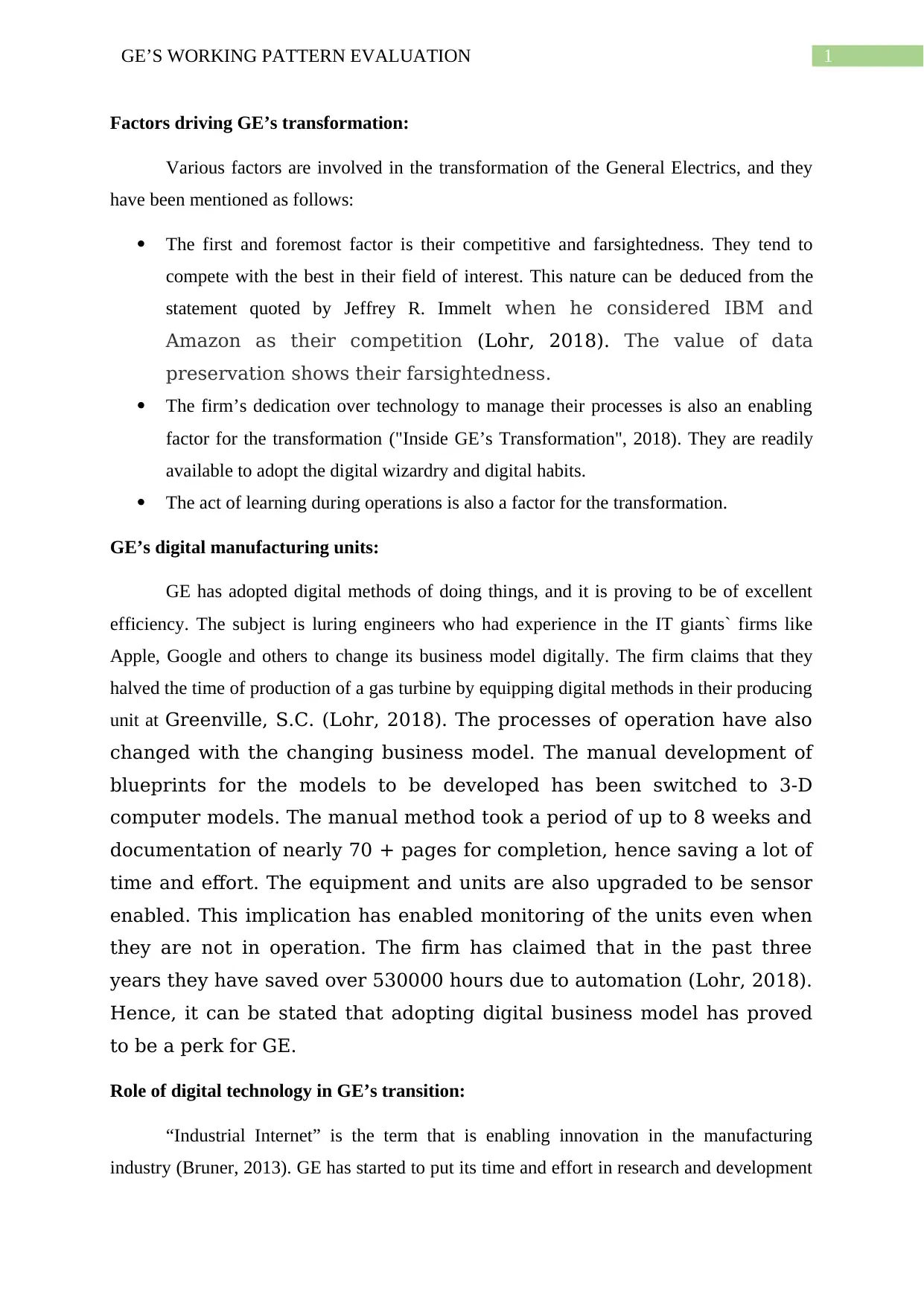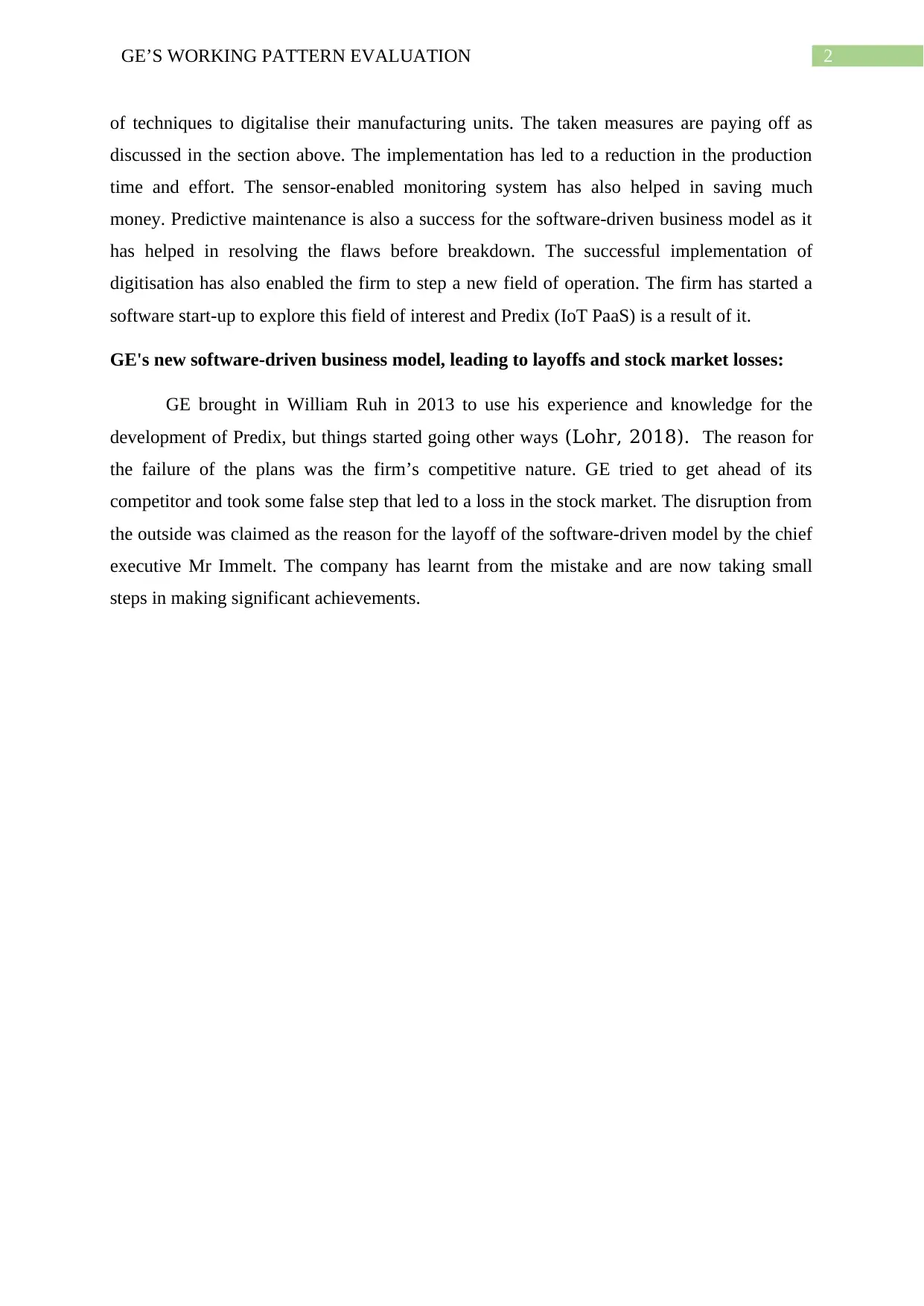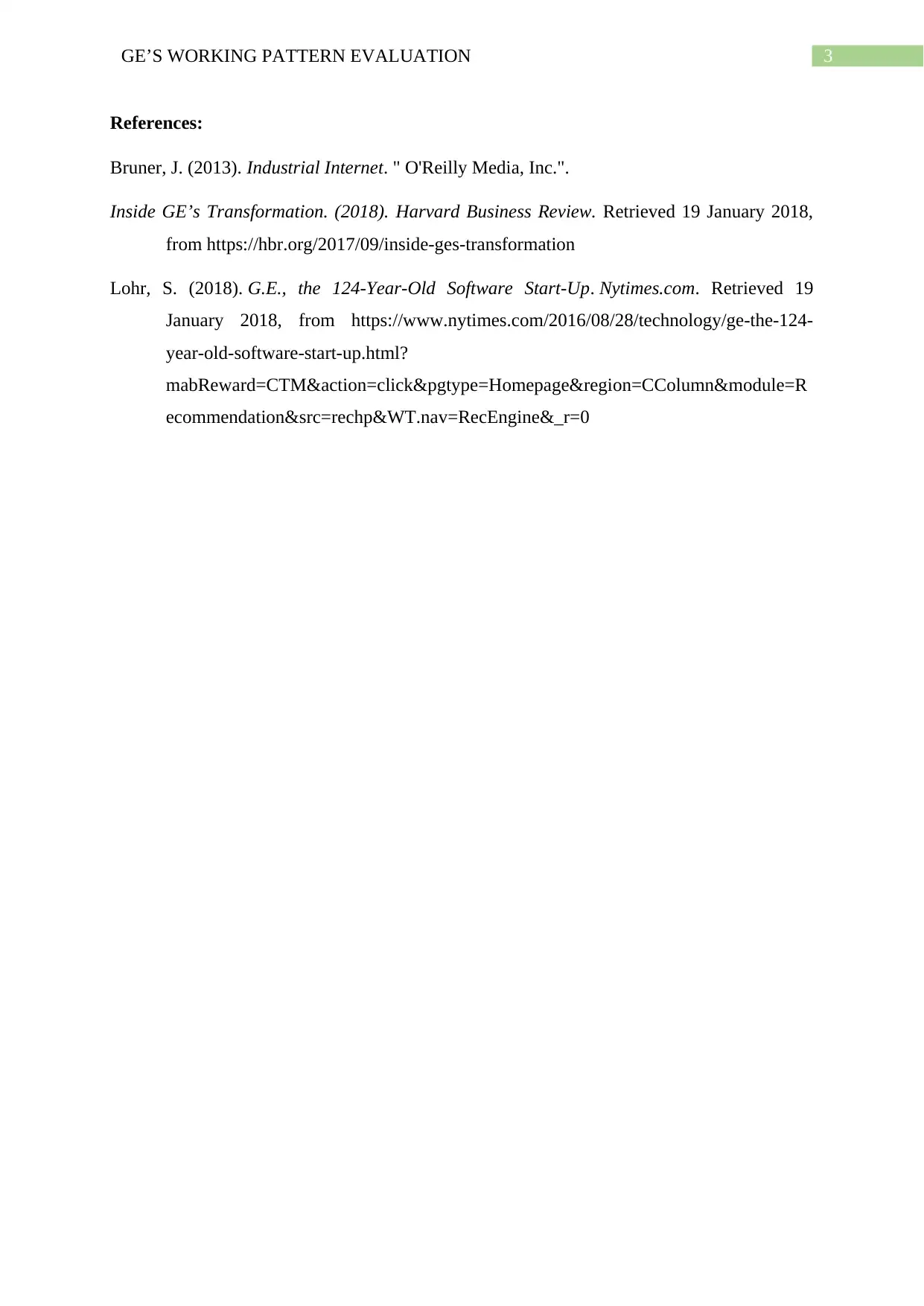GE's Transformation: An Evaluation of Working Patterns Analysis
VerifiedAdded on 2020/05/28
|4
|771
|42
Report
AI Summary
This report provides an evaluation of GE's working patterns, focusing on the factors driving the company's transformation. It explores the role of digital technology, including the 'Industrial Internet,' in GE's manufacturing units and operational processes. The analysis highlights the adoption of digital methods, such as 3-D computer models and sensor-enabled equipment, leading to significant time and cost savings. The report also examines the impact of GE's new software-driven business model, including the development of Predix, and the challenges faced, such as layoffs and stock market losses. The report concludes by summarizing the lessons learned and the company's current approach to making advancements in the digital space. The provided solution is available on Desklib, a platform offering AI-based study tools and resources for students.
1 out of 4











![[object Object]](/_next/static/media/star-bottom.7253800d.svg)